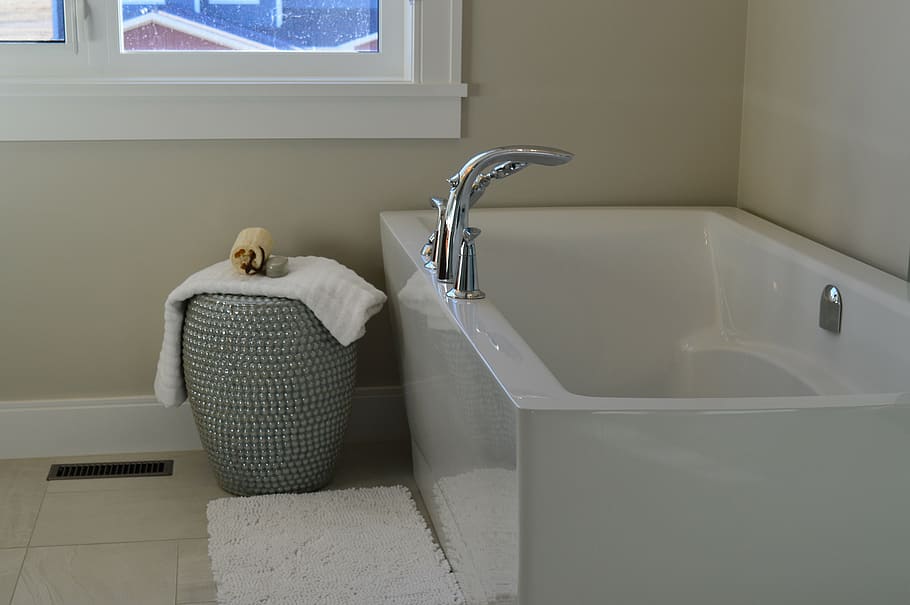
Selecting the perfect bathtub material is more than just about aesthetics; it’s a crucial decision that affects the durability, maintenance, comfort, and overall enjoyment of your bathroom experience. From the classic elegance of cast iron bathtubs to the modern versatility of acrylic and the practical affordability of fiberglass, the material you choose will significantly impact your bath’s warmth, feel, and longevity.
Dive deeper into our comprehensive guide to explore the different bathtub materials, and discover the perfect blend of form, function, and flair for your bathroom.
Understanding Bathtub Materials
The bathtub is more than a mere fixture in the home; it’s a sanctuary for relaxation and rejuvenation. With the evolution of materials from traditional to modern, the choice of bathtub material has become pivotal in defining the bathroom’s comfort, style, and functionality. This section delves into the history, common materials, and essential factors to consider when selecting the ideal bathtub material for your space.
The History of Bathtub Materials
The journey of bathtub materials through the ages reflects the advancements in technology and the changing preferences of society. From the early use of natural stone and wood to the introduction of cast iron in the 19th century, bathtub materials have evolved to include a wide range of options.
The development of molten iron techniques led to the popularization of cast iron bathtubs, renowned for their durability and heat retention. The 20th century introduced materials like acrylic and fiberglass, offering lighter weight, ease of installation, and versatility in shape and design. This historical evolution showcases the innovative strides made in creating more durable, comfortable, and aesthetically pleasing bathtub materials.
Choosing the Right Tub Material: Key Factors
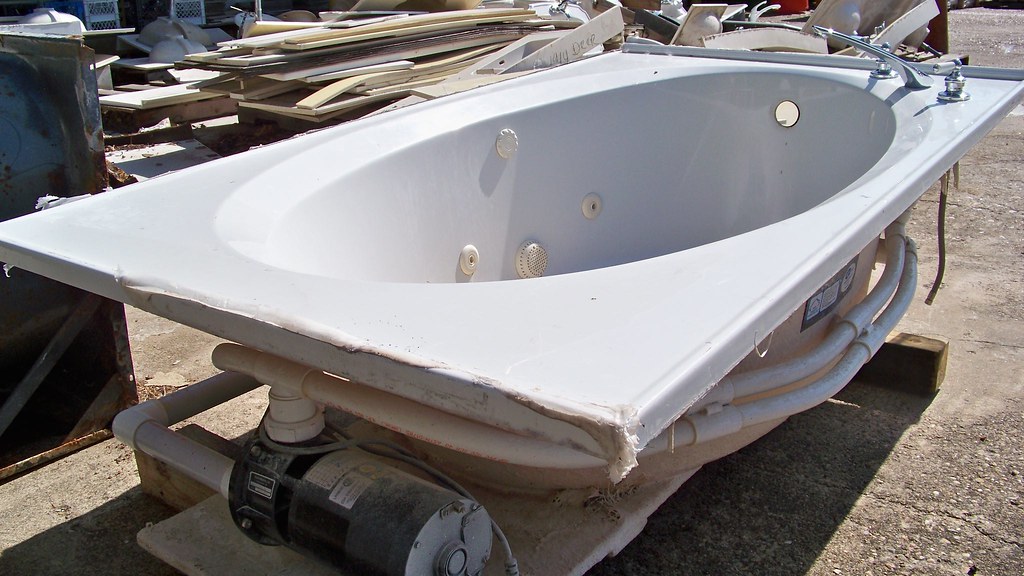
When selecting a bathtub, considering various factors ensures you find the perfect tub that meets both your aesthetic preferences and functional needs.
- Durability is crucial; cast iron and enameled steel bathtubs offer longevity, whereas acrylic and fiberglass tubs might need more maintenance to keep them looking their best.
- Maintenance varies across materials. Acrylic and fiberglass are straightforward to clean but more susceptible to scratches and fading. In contrast, cast iron and other non-porous materials like stone are more resistant to damage but can be heavier and more complex to install.
- Appearance plays a significant role in your choice. Whether you prefer the classic look of cast iron, the modern appeal of acrylic, or the natural elegance of stone, the material significantly impacts the overall aesthetic of your bathroom.
- Cost considerations are also important. While cast iron and stone generally involve a higher initial investment, they can provide timeless elegance and durability. Acrylic and fiberglass options are typically more budget-friendly and offer a wide array of design choices, including variations in bathtub shape and the ability to absorb water efficiently without leaking.
By weighing these factors against your specific needs and preferences, you’ll be well-equipped to choose a tub material that not only looks great but also serves as a functional, lasting part of your home’s comfort and style.
Whether it’s a durable acrylic tub for its versatility and ease of maintenance or a classic cast iron piece for its robustness and timeless beauty, the right choice will enhance your bathing experience for years to come.
What are the Common Bathtub Materials?
1. Cast Iron Bathtubs
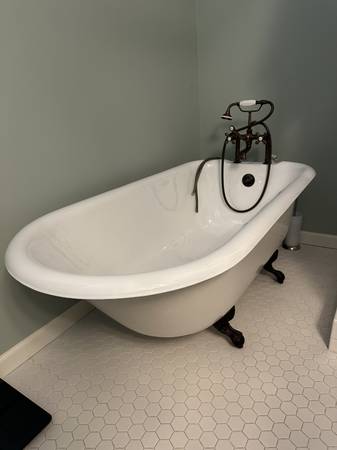
In the realm of bathtubs, cast iron has long been celebrated for its exceptional qualities that blend unparalleled durability, timeless beauty, and superior heat retention. This material stands out as the most durable bathtub material, offering a luxurious bathing experience that is second to none.
What Makes Cast Iron Tubs Ideal for Usage?
Cast iron tubs stand out for their exceptional durability and heat retention, making them superior to acrylic and fiberglass tubs in maintaining warm water.
The porcelain enamel coating not only gives a cast iron bathtub its luxurious finish but also ensures its place as a top choice for those seeking a blend of durability, warmth, and elegance in their bathing experience.
These tubs are celebrated for their classic design and robustness, which contribute to their status as a timeless and versatile option for bathroom renovations or new installations. Despite being heavier and requiring an upfront investment, enameled cast iron bathtubs are valued for their long-lasting appeal and functionality, offering great returns over time.
Cast iron tubs are also straightforward to maintain, resisting damage from abrasive cleaners and standing up well over the years. Choosing a cast iron tub, whether replacing an old tub or installing a new bathtub, can significantly enhance the comfort and aesthetic of your bathroom, turning it into a cozy retreat.
2. Acrylic Bathtubs

Acrylic bathtubs have become a cornerstone in modern bathroom design, favored for their versatility, easy installation, and visual appeal. These tubs strike a perfect balance between functionality and style, making them suitable for a wide array of bathroom layouts and design preferences.
The Appeal of an Acrylic Bathtub
Acrylic tubs stand out for their lightweight construction, significantly simplifying the handling and installation process—a stark contrast to the extremely heavy options like cast iron or enameled steel bathtubs.
This lightweight nature is especially advantageous for installations in upper-floor bathrooms or in structures with certain limitations. The range of bathtub shapes and sizes available in acrylic surpasses many other materials, allowing for everything from snug alcove setups to expansive, luxurious freestanding, and whirlpool bathtubs.
This versatility ensures that acrylic bathtubs can be tailored to fit any bathroom design, from the most common bathtub shapes to more unique, custom configurations. Moreover, the non-porous nature of acrylic makes these tubs resistant to the absorption of water and easy to maintain, standing up against common bathtub materials like fiberglass tubs and steel tubs.
Acrylic’s compatibility with reinforced plastic also enhances its durability, offering a robust yet affordable option in the spectrum of tub materials. Homeowners considering a bathtub replacement find acrylic to be an attractive choice due to its affordability and the vast selection of bathtub sizes. The material’s ease of installation and ability to retain hot water efficiently without the need for extensive modifications or a complex crawl space setup further add to its appeal.
3. Fiberglass Tubs
Fiberglass bathtubs are a staple in modern bathroom renovations and new constructions, offering a blend of affordability, ease of installation, and versatility that appeals to a wide audience. Recognized for their adaptability, a fiberglass tub can seamlessly integrate into various bathroom styles, from the most traditional to contemporary designs.
Understanding Fiberglass Bathtub Construction
Fiberglass tubs, recognized for their gel coating and non-porous nature, offer a blend of durability and aesthetic appeal, setting them apart from other tub materials like acrylic and ceramic bathtubs. Their design versatility accommodates a variety of bathtub shapes, from traditional alcove styles to luxurious freestanding models.
Beyond their visual appeal, fiberglass tubs are celebrated for their ability to retain water heat efficiently, ensuring a consistently warm bathing experience. Additionally, their lightweight construction simplifies installation, presenting a cost-effective solution for homeowners. With affordable prices and resistance to absorbing water, fiberglass tubs stand as a practical choice among the most tubs options available.
4. Enameled Steel Bathtubs
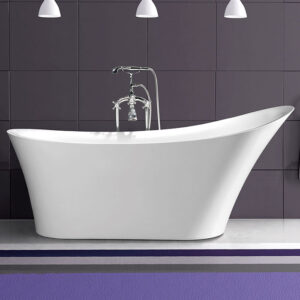
Enameled steel bathtubs present a unique blend of durability and sleek design, offering an alternative to the more traditional cast iron and modern acrylic options. These bathtubs combine the strength of steel with a smooth, glass-like porcelain finish, creating a durable and easy-to-clean surface that appeals to many homeowners.
Understanding the durability of enameled steel, along with its advantages and limitations, can help in making a more informed decision for your bathroom renovation or new construction project.
The Durability of Enameled Steel
When comparing enameled steel bathtubs to their cast iron and acrylic counterparts, several key aspects stand out. Enameled steel, being lighter than cast iron, offers a practical solution without sacrificing too much on durability.
The steel core is resistant to impacts, and the porcelain enamel coating provides a hard, non-porous surface that resists scratches and stains. Unlike cast iron, enameled steel bathtubs do not retain heat as well, but they do offer superior heat retention compared to many acrylic models.
This makes enameled steel a middle-ground option for those seeking the resilience and sleek finish of cast iron but who prefer something lighter and more cost-effective.
Exploring Other Bathtub Materials

While cast iron, acrylic, and fiberglass remain popular choices for bathtub materials, the quest for uniqueness and luxury in bathroom design has led to the exploration of more unconventional materials. Let’s delve into the benefits and features of these alternative materials, shedding light on why they might be the perfect choice for your next bathroom renovation.
Luxurious Bathtub Material: Stone and Wood Bathtubs
Stone bathtubs
Stone bathtubs carve out a niche in luxury bathroom design, offering a timeless elegance that is both visually striking and tactilely satisfying. Made from materials like granite, marble, or travertine, stone bathtubs are known for their durability and unique natural patterns, ensuring that no two tubs are exactly alike.
These tubs excel in retaining heat, and keeping bath water warm for extended periods. Additionally, stone is a highly durable material, resistant to scratches, and easy to maintain, although it requires regular sealing to preserve its beauty.
Wood bathtubs
Wood bathtubs, on the other hand, bring a warm, organic feel to the bathroom. Crafted from hardwoods such as teak, cedar, or mahogany, wood tubs are celebrated for their natural insulating properties, which help retain heat well.
Wood also offers a sense of connection to nature, creating a relaxing, Zen-like atmosphere. However, wood bathtubs require more maintenance to keep the wood sealed and protected from water damage, making them a labor of love for those who choose this material.
Innovative Materials: Stone Resin and Cultured Marble
Stone Resin
Stone Resin bathtubs are a modern innovation that combines natural stone minerals with acrylic polymers, creating a durable, non-porous material. This makes them resistant to stains, easy to clean, and capable of retaining heat well.
Their sleek designs are perfect for freestanding tubs, offering a contemporary centerpiece for any bathroom. Stone resin’s versatility and ease of installation make it a top choice in the bathtub buying guide for those seeking different materials beyond the most common bathtub materials like fiberglass tubs and acrylic bathtubs.
Cultured marble
Cultured Marble offers the luxury of marble without the high cost, blending crushed limestone and resin with a gel finish for strength and chip resistance. These tubs are easy to install, customizable in colors and patterns, and provide a seamless, smooth look ideal for any decor. Cultured marble is an excellent option for those looking for durable, aesthetically pleasing bathtubs made from innovative materials.
Both materials represent a shift towards bathtubs that are not only functional but also serve as design statements, fitting well with freestanding setups, bathtub mold designs, and air tubs. Whether you’re renovating or selecting a tub for a new build, stone resin and cultured marble offer unique, easy-to-maintain options that stand out from traditional choices.
Looking Ahead to Bathtub Material Trends
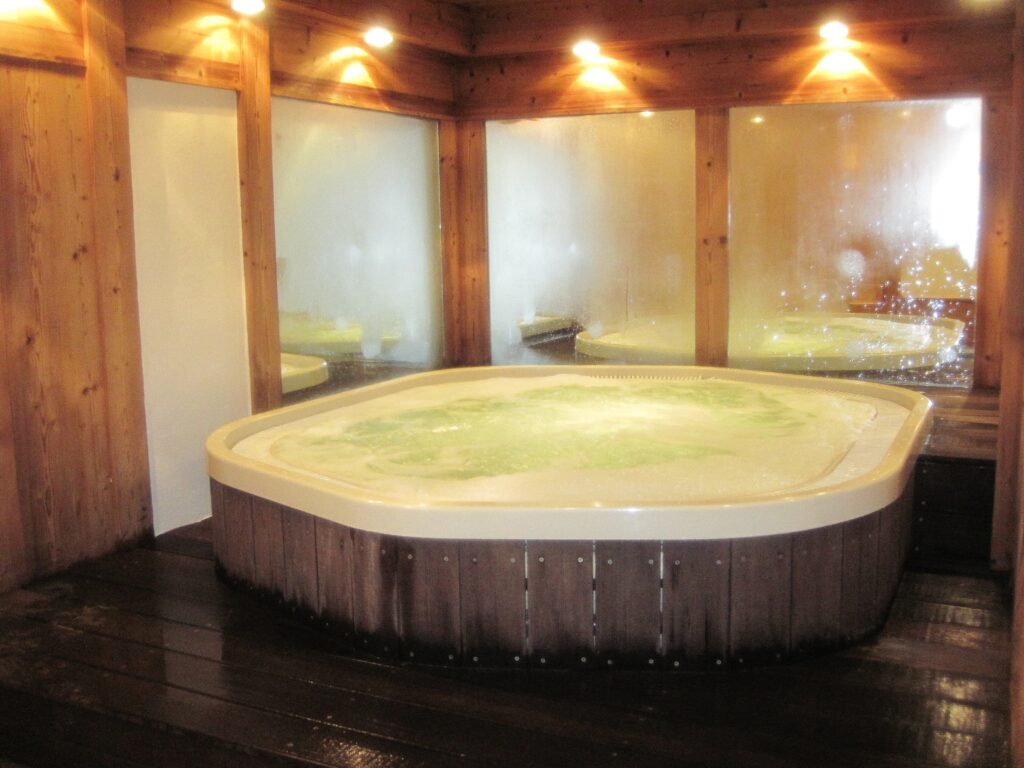
As the bathtub industry evolves, innovation and sustainability are becoming key in bathroom design, leading to more durable, beautiful, and eco-friendly bathtubs. Emerging materials like stone resin and advanced manufacturing techniques are introducing options such as recycled acrylic, widening the choice for homeowners who value luxury and environmental care.
This trend towards innovative, luxurious, and eco-conscious bathtub materials, including acrylic tubs and fiberglass options, is setting new standards for comfort and design in eco-friendly homes, ensuring a diverse selection for most tub preferences.
